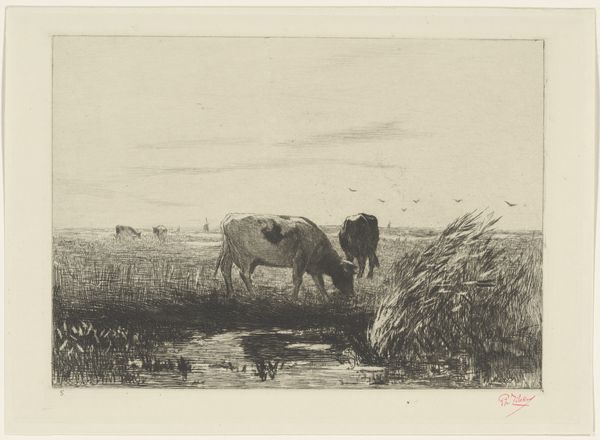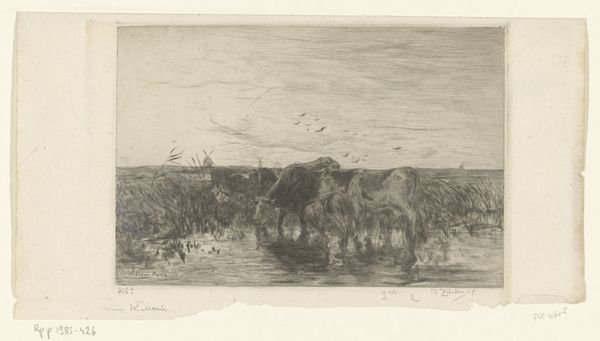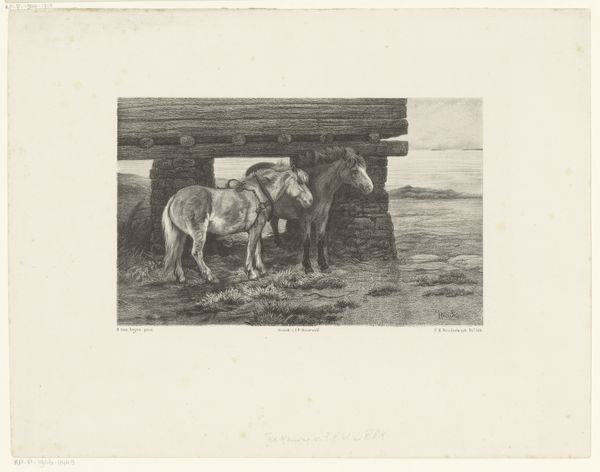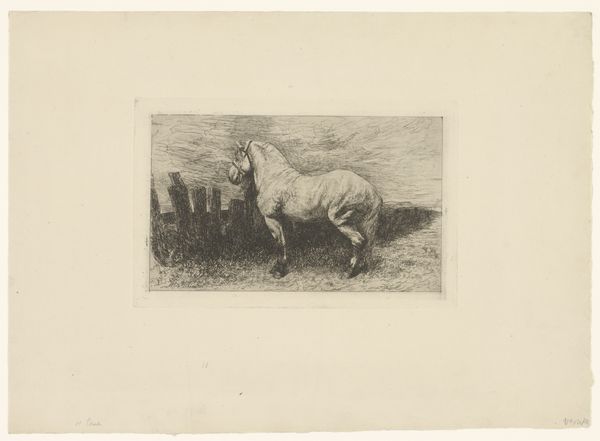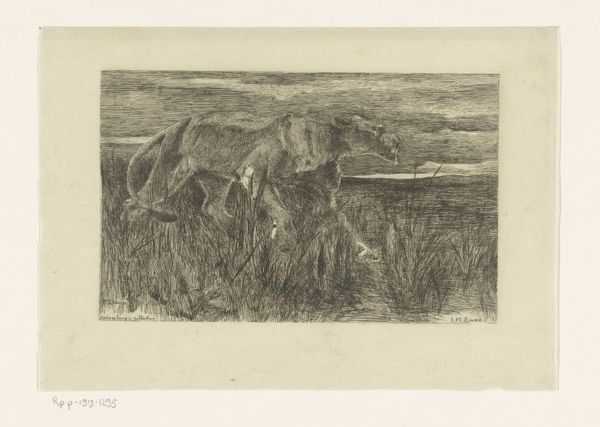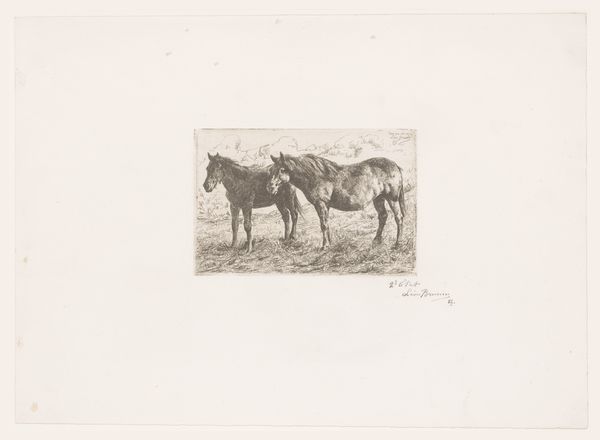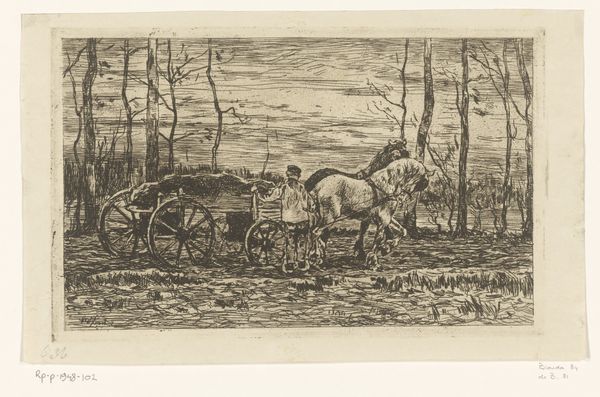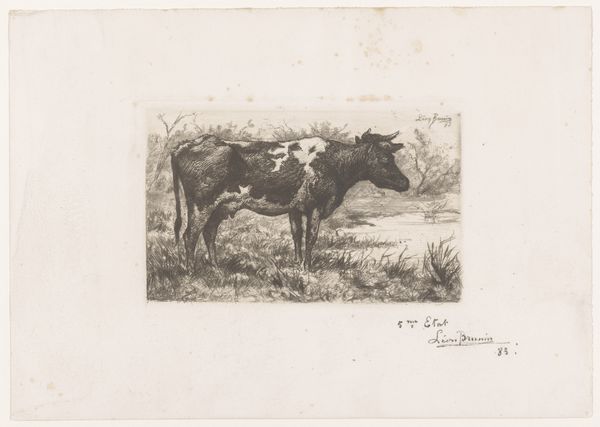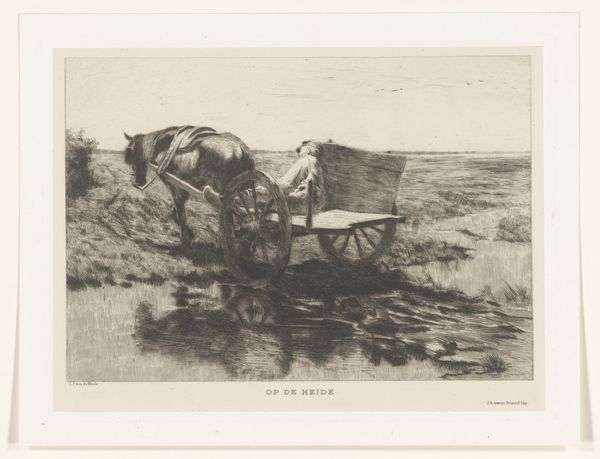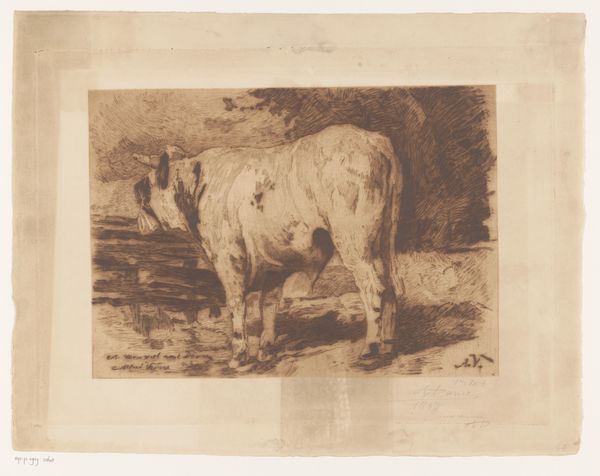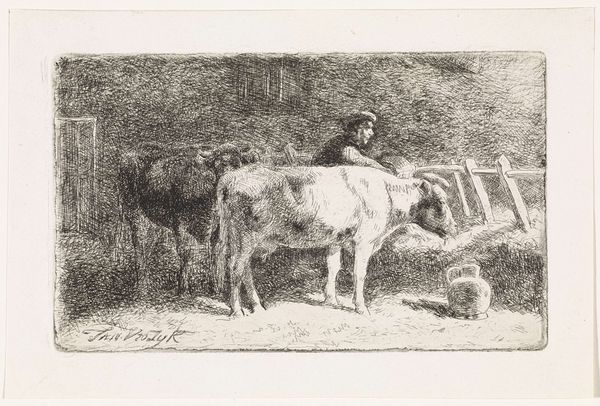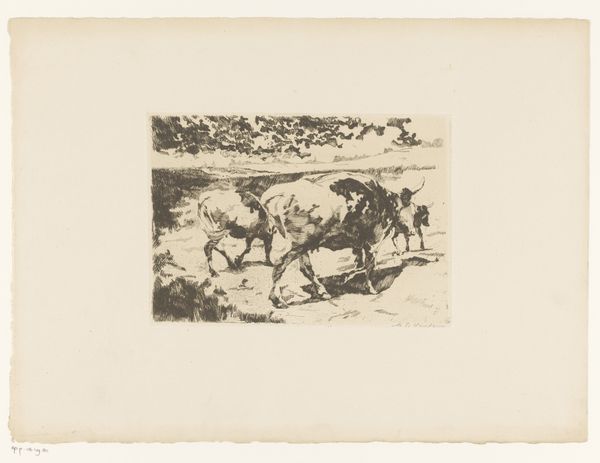
print, etching
# print
#
impressionism
#
etching
#
landscape
#
genre-painting
#
realism
Dimensions: height 128 mm, width 200 mm
Copyright: Rijks Museum: Open Domain
Curator: What a wonderfully atmospheric print! This etching, made around 1885, is titled "Four Cows in a Meadow" by Willem de Zwart. Editor: It's lovely—immediately evocative of a quiet afternoon in the countryside. There’s something very grounding and timeless about it, despite the scratchy, almost urgent linework. Curator: Indeed! De Zwart was clearly working within a burgeoning Realist tradition, taking the everyday, agrarian scene and elevating it through careful attention to light and form. Genre painting of rural life gained importance within institutional art exhibitions. Editor: Absolutely, and it’s hard to ignore the primal significance of cattle. For centuries they've represented sustenance, wealth, and even pastoral idylls. Even the very material from the print is associated to such practices. Did De Zwart give the viewer a scene he encountered, or was he leaning into that collective symbolism? Curator: I believe there’s a conscious connection here. De Zwart trained at the Hague Academy and engaged deeply with contemporary artistic debates around naturalism. Placing cows—a central element of Dutch agricultural identity—into an impressionistic scene signals both a rootedness in tradition and a movement towards modern aesthetic concerns. Editor: The shading and texture are incredible, especially around the cows themselves. It almost makes them feel…sacred, rendered in such loving detail within an otherwise sketchy landscape. It reminds me of fertility idols; that sense of life springing forth is so strong. Curator: I agree. The composition pushes these bovine figures into the foreground. These works become symbolic not only of rural stability, but also a potent symbol that appealed to a growing urban audience. The cows are no longer just livestock; they represent a yearning for a simpler life, carefully crafted for urban consumption. Editor: That's fascinating! It really changes how I see it—not just a serene scene, but almost a carefully staged narrative playing into socio-economic trends. Thanks, now I see how his scene could capture the imagination during this particular moment in history. Curator: Exactly! It's those connections between art and social currents that make pieces like this so captivating to analyze, it reveals how images hold a place and a moment, even the expectation of the future in collective thought.
Comments
No comments
Be the first to comment and join the conversation on the ultimate creative platform.
